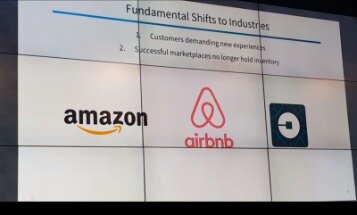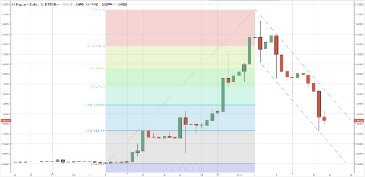Welcome To A Little Piece Of America
Content
The segment was fiercely competitive; Mercedes-Benz, BMW, Audi, Alfa Romeo, Saab, Volvo and Renault tussled for a slice of it. The Japanese were upping their game and Ford created its Merkur brand to Europeanize itself. Pricing varied from region to region, a common practice during the 1950s. On the west coast, the 403 started at $2245 ($19,500 in 2019 money). Based in New York, Peugeot’s distributor sold 6867 cars in 1958 and 15,787 the following year. Peugeot officially began selling cars in the United States when it started importing the 403 in 1958.
It replaced the 403 with the 404 but it never considered selling the smaller 204 in the US. It briefly tried thinking small when it began importing the 304 during the 1971 model year. The advertising campaign that promoted it cleverly placed it“between the Bugs and the Benz” but the model didn’t sell well and it retired after 1972. CXA charged a small fortune for a US-spec CX; prices started in the vicinity of $30,000 during the mid-1980s, which represents $70,000 in 2019 money. Charging Cadillac money for a quirky French car with zero parts and service support was an optimistic decision and sales predictably remained low. CXA nonetheless turned its attention to the XM after CX production ended and sold a tiny handful of examples in the US.
Peugeot 208 1 6 E
First, the American new car market entered a recession; Detroit’s biggest automakers suffered from it, too, and reduced their production output by 40% in early 1961. Second, the Volkswagen Beetle was becoming immensely popular and American firms were beginning to release their own compact models.
Sales began in 1976 and the model became known as the LeCar the following year. The timing was right; America was still recovering from the Arab Oil Embargo and Japanese companies were making a small fortune by selling motorists small, fuel-efficient cars. Only 5780 American motorists bought one of its cars in 1975. To add context, Peugeot sold 11,850 examples of the 504, the only model it offered in the US, that year. Volkswagen ended 1975 far ahead with 268,751 sales but it had its own problems to deal with; sales had plummeted spectacularly from their 1970 peak of 582,573 units. It released the 10, which it billed as a luxury compact model, and added the 16 to its portfolio in 1969.
Spine also has floral designs, and gilt stamping and is a bit sunned. Remnants of Good Conduct label on inside of front cover. About two by one inch piece of paper on inside of front cover peeled off, a scarce flaw. George Routledge and Co., Farringdon Street., London, 1852. Bound in half morocco, gilt, over marbled boards; spine in compartments with gilt bands, with contrasting black morocco title label, gilt. Early inscription of Mrs Edward Hooper 34 Upper Bedford Place on verso of first free endpaper.
The pictures were produced and gathered for worldwide distribution by George Grantham Bain through his Bain News Service. Incredible photographs taken by one of America’s earliest news picture agencies have emerged, with Titanic survivors, teenage suffragettes and even royalty among the images. Forgotten the title or the author of a book? Our BookSleuth is specially designed for you. With Citroën, Renault and Peugeot gone, American buyers who wanted a French car were plainly out of luck. Unlike Renault, Peugeot had little interest in competing against Volkswagen for a slice of the bargain-priced economy car segment.
Details About United States Of America: A Picture Book To Remember Her By, David Gibson, Ted S
The company received 13,000 orders for the car at the 1958 New York auto show even though it clearly told buyers they wouldn’t get their car for at least 10 months. New York-based John L. Green Operations began selling the Renault 4CV in America in 1949. It was available in two trim levels called Standard and Grand Luxe, respectively, and sales literature claimed the 4CV could return 50mpg. Pricing started at $1035, a figure that represents $11,000 in 2019.
The 11 became the Encore when it received similar tweaks in 1984. Both sold well early on but reliability problems soon dented their reputation. They also ate into Renault’s profit margin because a lot of the issues were covered by the warranty.
They founded a company named CX Automotive in the early 1980s that specialized in federalizing and importing CXs to America. Citroën attempted to sell the Ami 6 in the United States until it realized competing against Volkswagen in America was futile. Its cars were overly basic and too underpowered, even when compared to a homely Beetle. It stopped offering two-cylinder cars in 1966 (though the Mehari joined its American line-up in 1970 only) and focused on the upper end of the market.
Picture Progress
It sold just 4200 cars in 1990 and, alarmingly, only 2223 units during the first seven months of 1991. Its cars were as robust as ever but America’s appetite for diesel engines was shrinking and Peugeot’s competitors were becoming more aggressive. In August of 1991, Peugeot of America announced its own demise to its 151 dealers. It was a handsome, well-built car with sure-footed handling. It was too little, too late; the 405 was the kind of car Peugeot needed in the middle of the 1980s.
It canceled the car when the National Highway Traffic Safety Administration banned companies from selling cars with an adjustable suspension due to safety concerns. In 1949, Citroën sold approximately 10 cars in the United States. Its line-up consisted exclusively of the Traction Avant , which celebrated its 15th birthday that year. Annual sales grew to 13 cars in 1950 but dropped to five in 1951.
Native American Indian Girl And Wolf Wall Mahogany Framed Picture Art (18x
Released in 1979, the 505 stood out as one of its best-ever cars. It looked good, it handled well, it was solidly built and the line-up included a wide variety of models. Even in America, buyers could choose between a sedan and a station wagon and a long list of trim levels ranging from a base-spec GLmodel to a 142hp Turbo. Taxi drivers loved it; Peugeot even offered to paint the 505 taxi yellow right at the factory . Imported premium and luxury cars were in hot demand in the US during the 1980s.
This extract explains the natives showing the settlers how they lived. Royalty also graced the pictures, with one portrait from 1900 showing King George V standing next to his wife Mary of Teck. Prince Philip’s sisters Princess Margarita and Theodora of Greece, seated together in chair as children, also feature among the collection.
Native American Indian Maiden Girl Sunset Wall Art Decor Silver Framed Picture
It remained on sale until 1989 though we’re not sure anyone noticed. After all, these cars seemed to work okay in Europe. AMC built 623,573 examples of both cars (including a convertible sold only in the US – pictured) between 1982 and 1987. Renault began investing in AMC in 1979 and it purchased a controlling stake in the company in 1980. On paper, the two automakers complemented each other exceptionally well.
- Renault needed to banish memories of the Dauphine from the minds of American consumers.
- Few motorists noticed the 10 but the 16 did reasonably well.
- The Japanese were upping their game and Ford created its Merkur brand to Europeanize itself.
- AMC began producing the Renault 9 in its Kenosha, Wisconsin, factory in 1983, which was originally a Nash plant.
- Surely, if there was a model to help it conquer the US, this was it.
- This strategy likely explains why the 4 wasn’t added to its US catalog even though it was extensively tested in Minnesota in the years prior to its launch.
Surely, if there was a model to help it conquer the US, this was it. It nonetheless helped the firm reach 5766 sales during 1957. Chrysler started importing Simca models into the US during the late 1950s. Learning We offer a range of inspiring opportunities for schools, young people, adults and families to engage with art and the Gallery.
In 1969, there werenearly a dozenavailable models made by France’s top car manufacturers. They all left the US decades ago due to falling sales and a general inability to adapt to the intricacies of the American market. None have dared to go back since but the reinvigorated French giant PSA Group plans to re-introduce itsPeugeotbrand in America by 2026 and perhaps even sooner.
Installing a fixed suspension would have required a costly, complicated redesign. The firm’s smaller models – the 2CV and its derivatives – were ill-suited to the American market. It left the US in 1974 and it hasn’t returned since. Citroën hoped the GS would help it reboot its American division during the 1970s. It sent dealers a handful of US-spec cars (fitted with legally-mandated sealed-beam headlights) to prepare for the launch.
Few motorists noticed the 10 but the 16 did reasonably well. Renault US sold 20,419 cars in 1969 and 23,373 the following year. It was joined by the 12, the 15 and the 17 during the 1970s. Renault kept shipping boatloads of cars to the US but dealers had no funds to buy them. Even if they could, motorists were more likely to buy a Volkswagen or a Chevrolet Corvair. The Floride/Caravelle was developed with the American market in mind and Renault’s bet paid off.
Professional boxer and former world heavyweight champion Jack Dempsey was also pictured standing tall, and female baseball player Myrtle Rowe was seen holding a bat. A colourful, fun and informative map of South America taken from Collins Children’s Picture Atlas. Printed on a quality, heavy satin paper or canvas, perfect for framing or mounting.













